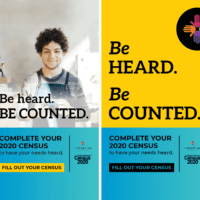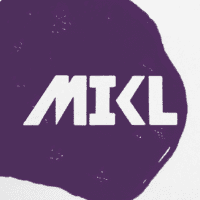The Tuesday Rant: Where are the Words?
By / /
Volume 1 In a Series By Felix
Back in 1998 I remember seeing a screensaver running across the Mac displays at BBH, London. It was a simple phrase – “Words are a barrier to communication.” Nice, punchy, very BBH, but there was one slight, ironic problem – if words are such a barrier to communication, why was the message written as a sentence? Is it because trying to say that with pictures or symbols would take some serious effort? And the skills of a cunning Art Director?
A long time ago my idol Bill Bernbach said, “It’s not just what you say that stirs the people, it’s the way you say it.” These days though, advertising has become more like, “It’s not just what you show that stirs the people, it’s the way you show it.” Flicking through design annuals and ad blogs, we’re bombarded with ads that are visual puns or twists, with a logo stamped in the lower right-hand corner.
Clearly, we’re all adopting this BBH mentality some 10 years after I first saw it. Copywriters these days seem to be going the way of the DoDo, unless they know how to mash together two visuals in some funky way. It’s not difficult. If you’re selling really fresh canned fruit, simply cut the can in half to reveal a slice of orange or kiwi. Clever right? Maybe you’re a burger chain that sells coffee. Try turning a coffee bean on its side… see, it looks like a burger. Now go get some polish for your shiny award.
Another idol of mine, Neil French, wrote a terrific ad about this with the headline, “Don’t bother to read this ad, the picture’s missing.” It was an ad for Ibid, a stock library. And as far as I know, it got tremendous response. Hey, it won a gong or two as well. And there wasn’t a convoluted shoot or piece of Photoshop magic anywhere. But then again, that was aimed at people in the industry, and we can read… the general public obviously can’t judging by what I’m seeing the ad industry pump out daily.
I’m often told that advertising has changed because we’re just too busy to read. Try telling that one to J.K. Rowling or Stephen King. Or, that we’re inundated with hundreds of ads every single day, and so they need to be simple to have impact. But how can they have impact if they all look the same?
When I look at some of the ads that got me into this business, like the classic VW work, Chivas Regal (David Abbott, Neil French) or the Avis campaign, and then I look at what we’re all producing now, my shoulders droop. Then my eye starts twitching, with that psychopathic wink made so famous by Herbert Lom in the Pink Panther movies. Is this the evolution of advertising? It seems more like a recession to me.
But when we live in a world where the number one song is by a pre-pubescent looking mall creature singing “I Kissed A Girl” then I guess we’re all just responding to a market that has truly rejected words and logic in favor of a pretty picture with the depth of a puddle. It’s what I call the Paris Hilton effect – nice to look at, but there’s nothing under the surface. And after a few minutes in its vapid presence, you want to stab it repeatedly with a rusty X-Acto knife.
I hope one day history will repeat itself and we’ll go back to an age of advertising that uses reason, logic and product benefits to sell; something that tells you why to buy, not just what to buy. Until then, I suppose I’ll keep fighting the fight for better ads with compelling headlines and interesting copy. I don’t expect to win it anytime soon.
Felix.
P.S. If you’ve managed to get this far, you’ve just read more words than are usually printed in about 100 of today’s ads combined. You may feel dizzy, but this will pass.






Comments
Larry Hinkle July 15, 2008
amen, brother.
amen, brother.
Brian Suter July 15, 2008
Great write-up Felix! I
Great write-up Felix! I cannot help but agree – groovy graphic design is #1 in advertising. Idea-driven, conceptual design is now resting somewhere between #7 & #10.
escritor July 15, 2008
Vivas las palabras!
Vivas las palabras!
AppleZ July 15, 2008
The perfect visual pun
The perfect visual pun “Archive” ad will be a staple of advertising for the near future.
But it does represent a problem for the young people who use it as an aspirational goal. A book built on fun, visual solutions doesn’t prepare you for the bulk of actual writing work that we have to do.
I’m finding the need to have junior writers send longer writing samples before I can hire them. Most, if not all, have no long copy in their books. Most don’t enjoy words, but think that the brass ring is that “look how clever I am” visual solution.
For seasoned writers, the visual solution is fine because they have their words to fall back on. But for the young writers out there with a book full of pictures and logos, we are doing them a disservice by not forcing them to write motivating, moving copy.
paul suggett July 15, 2008
Here, here, AppleZ. The first
Here, here, AppleZ. The first job I got in my first agency, as a lowly jr. writer, was to write an advertorial for Weight Watchers. I wonder how many young writers could do a compelling long-copy piece?
tall July 15, 2008
bad copywriting leans on
bad copywriting leans on puns.
why do people think great art direction should do the same?
paul suggett July 15, 2008
As my old CDs have said,
As my old CDs have said, often, there are no good puns. And if you think your book is full of GREAT puns, find another job.
Randall Erkelens July 16, 2008
A favorite from a portfolio I
A favorite from a portfolio I saw a couple of years ago..
Client: Stock Show
Headline: Sheep Thrills
Good copy is hard to come by in this world of visual tricks. Somedays, I feel it’s a lost art… like good typography in general (more on that later). I once heard somebody say that Photoshop is visual masterbation. But I also believe that a cunning visual ad without any headline or copy can command attention.. and if crafted correctly, it will transcend language and cultural barriers.. perhaps, that’s why so many Grand Prix Lions are given to such ads.. ie.. bent safety pin to look like a Volvo. VW stuff.. Lego in 2006 (even though it was totally spec). They all spoke to just about everyone on the planet without saying much in copy or at all.. At the heart is a great concept.. and the trend for the past decade or so has been that type of ad that’s favored with the judges.
I’d say that copy-driven ads will make their comeback.. just give it time. Sometimes, a great headline says it best. And it’s up to to all of us to use the best solution for each situation.. not just force fit fancy design into an ad.. no matter how many layers you can squeeze into your 2 gig photoshop document. I’ve seen some good headlines come out of Denver.. but often they’re just stuck on fancy designs and don’t integrate as well as they could with the concept..
Perhaps, what’s missing isn’t good copywriting.. it’s good art director / copywriter teams that collaborate together?